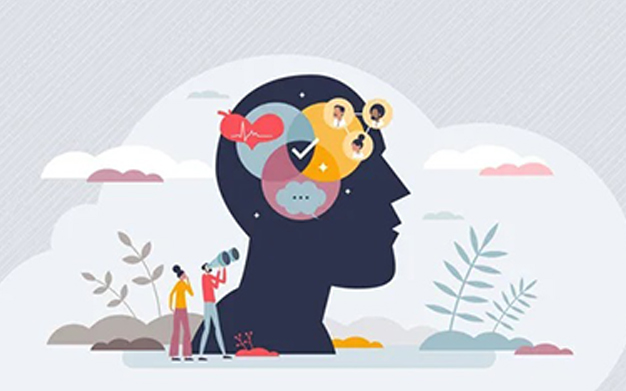WSHD themed “Sexual Justice: What Can We Do?”
- Empowerment through Education**: Promote comprehensive sexual education that encompasses consent, bodily autonomy, and healthy relationships to empower individuals of all ages.
- Intersectionality Matters**: Recognize that sexual injustices affect various communities differently; we must address race, gender, sexuality, and socio-economic status in our discussions and actions.
- Calling Out Toxic Masculinity**: Encourage conversations around dismantling toxic masculinity and its role in perpetuating sexual violence and harassment.
- Support Survivors**: Promote a culture of support for survivors of sexual violence, emphasizing belief, healing, and the importance of providing resources for recovery.
- Inclusive Policies**: Advocate for policies and laws that protect all individuals, regardless of gender identity or sexual orientation, ensuring equal rights and opportunities.
- Amplifying Marginalized Voices**: Highlight the importance of listening to and elevating the voices of marginalized communities in the fight for sexual justice.
- Community Mobilization**: Encourage grassroots movements and community engagement to create safer spaces and promote collective action towards sexual justice.
- Digital Safety**: Address the importance of online safety and a safe digital environment, recognizing both the challenges and opportunities presented by technology in sexual justice advocacy.
### Suggestions for Improving Toolkit:
- Fact Sheets**: Include updated statistics and case studies that reflect recent developments in sexual justice, emphasizing global perspectives and local initiatives.
- Quizzes**: Create quizzes that challenge misconceptions about sexual justice and educate participants on rights, resources, and the impact of sexual violence, ensuring they are engaging and informative.
- Social Media Templates**: Develop customizable social media templates to foster personal stories and advocacy campaigns that resonate with different audiences, including hashtags for broader engagement.
- Resource Hub**: Curate a centralized online resource hub with articles, videos, and tools that individuals and organizations can access to better understand and advocate for sexual justice.
- Interactive Webinars**: Organize interactive webinars with experts in sexual justice, allowing for Q&A sessions that can help educate and engage participants in meaningful dialogue.
- Partnerships**: Collaborate with educational institutions, NGOs, and community organizations to disseminate toolkits and materials widely, ensuring diverse input and outreach.Evaluation Metrics**: Include suggestions for how organizations can measure the effectiveness of their initiatives related to sexual justice, providing a framework for ongoing improvement and accountability.
By incorporating these messages and suggestions, the toolkit can play a pivotal role in fostering a global dialogue about sexual justice and mobilizing meaningful actionHere is a comprehensive and detailed answer:
*Key Messages*
- Bodily Autonomy is Non-Negotiable_: Emphasize that every individual has the absolute right to control their own body and make decisions about their sexuality without coercion or pressure.
- Consent is Ongoing and Enthusiastic_: Clearly define consent as freely given, informed, and enthusiastic agreement that can be withdrawn at any time.
- Challenge Sexual Stigma_: Address the harmful stigma surrounding topics like STIs, contraception, abortion, and diverse sexual orientations and gender identities.
- Intersectionality Matters_: Acknowledge that sexual justice is intertwined with other forms of social justice, including racial justice, gender justice, economic justice, and disability rights. Invest in Comprehensive Sex Education_: Advocate for age-appropriate, inclusive, and evidence-based sex education that addresses sexual health, consent, relationships, and diverse sexual orientations and gender identities.
*Toolkit Ideas*
- Fact Sheets_:
- Sexual Rights and Freedoms”
- Consent and Healthy Relationships”
- Sexual Diversity and Inclusion”
- Comprehensive Sex Education”
- _Quizzes_:
- “Sexual Health and Rights Quiz”
- “Consent and Boundaries Quiz”
- “Sexual Diversity and Awareness Quiz”
- _Social Media Templates_:
- “Sexual Justice is Human Rights” graphics
- “Consent is Key” social media posts
- “Celebrate Sexual Diversity” social media campaigns
- _Infographics_:
- “The Importance of Comprehensive Sex Education”
- “Sexual Violence Statistics and Resources”
- “Sexual Rights and Freedoms Around the World”
- _Personal Stories and Testimonials_: Share stories of individuals who have experienced sexual injustice and how they overcame it.
Refining WSHD Resources
- Focus on Action_: Include actionable steps individuals can take to promote sexual justice in their communities.
- Use Plain Language_: Ensure fact sheets are written in clear, concise, and accessible language, avoiding jargon.
- Incorporate Cultural Sensitivity_: Tailor information to different cultural contexts while respecting diverse values and beliefs.
- Make Quizzes Interactive_: Include interactive elements like videos, images, and polls to engage users.
- Provide Personalized Feedback_: Offer tailored feedback and resources based on quiz results.
- Focus on Learning_: Design quizzes to educate users about sexual health and rights rather than just testing knowledge.
- Keep Social Media Visual_: Utilize eye-catching graphics and videos to grab attention.
- Use Relevant Hashtags_: Incorporate trending and relevant hashtags to increase visibility.
- Encourage User-Generated Content_: Encourage users to share their own stories and messages using provided templates.
Additional Toolkit Ideas
- Develop a “Call to Action” Guide_: Provide specific steps individuals can take to advocate for sexual justice.
- Create a Resource Library_: Compile a comprehensive list of relevant organizations, hotlines, and support services for survivors of sexual violence and individuals seeking sexual health information.
- Organize a Local Event_: Host a community event, such as a panel discussion, film screening, or art exhibition, to raise awareness about sexual justice issues.
Attaining Sexual Justice
- Education and Awareness_: Promote comprehensive sex education and awareness.
- Policy Change_: Advocate for policy changes that promote sexual rights and justice.
- Community Engagement_: Engage with local communities and promote community-led initiatives.
- Support Survivors_: Provide support and resources to survivors of sexual violence.
- Amplify Marginalized Voices_: Amplify the voices and stories of marginalized communities.


Leave a comment